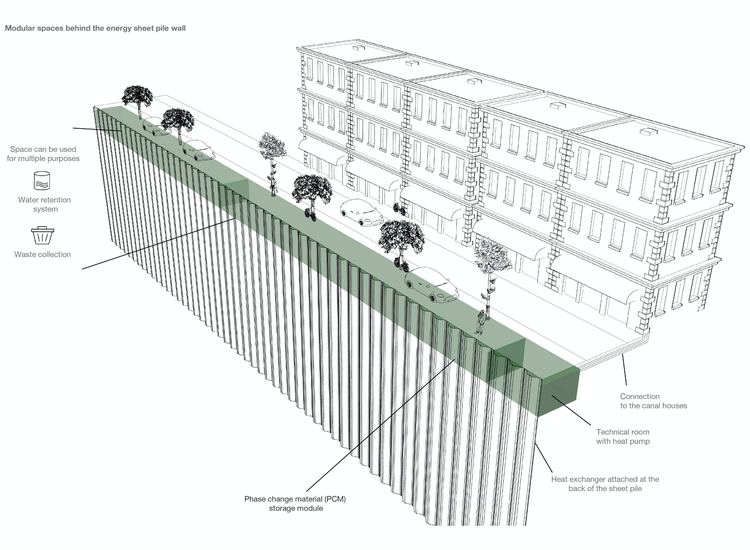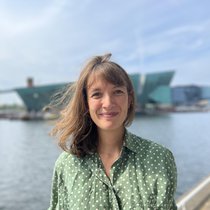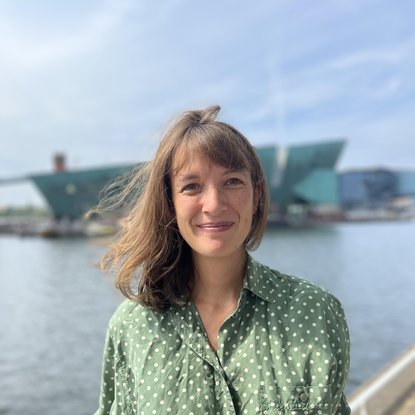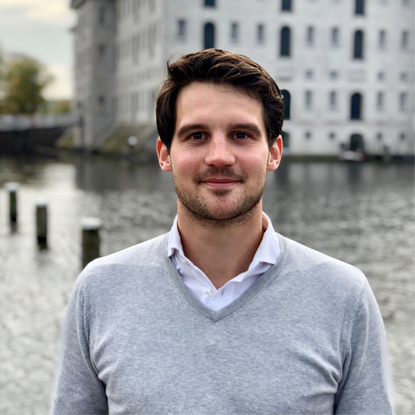The City of Amsterdam has the ambition to become climate neutral by 2050. Therefore, Amsterdam has set a number of energy ambitions, for example, to reduce CO2 emissions by 95% by the year 2050. Other goals are to eliminate the use of natural gas by 2040, phase out fossil fuels by 2050, and have 80% of the electricity that households use to be generated by solar and wind energy in 2030.
Energy-saving measures for the city’s monumental area
To meet these energy ambitions, it is crucial to define a long-term strategy for the inner city – this area has the highest heat demand density in Amsterdam. For the historic inner center, Amsterdam focuses on a 70% gas reduction in 2040 and to use biogas and hydrogen in combination with hybrid solutions for the remaining.
“Resources like biogas and hydrogen are limited, expensive, and dependent on regional production, conversion, and transport capacities. Therefore, we are working on a multi-annual research program to support the City in identifying energy-saving measures for this monumental area.”
Maéva Dang
Research Engineer
Renovating Amsterdam's quay walls and tackling energy ambitions
Amsterdam wants to be a green, healthy and prosperous city for everyone who lives, works or visits here. Not only does the City develop solutions to accelerate the energy transition, as part of becoming 'future-proof', Amsterdam also set up a program to renovate up to 200 kilometers of historic quay walls.
Due to their age – these quays can be up to 300 years old – and changed conditions, many quay walls are to be considered as sub-standard, and potentially unsafe. Together with TU Delft, as part of another research project we assist the City in developing technical solutions to better our understating of the structural and shallow subsurface conditions affecting the behavior of historical quay walls.
What if we could solve multiple urban challenges at the same time? By developing innovative solutions, we want to tackle the city's energy ambitions while simultaneously making Amsterdam's quay walls future-proof.
An innovative canal wall that includes a heat exchanger
Our 'High hanging fruit' project focuses on sustainable heating solutions for Amsterdam’s historic buildings. For this project, we explore opportunities for synergies with alternative heat solutions such as thermal energy, residual heat and other forms of low temperature in the historic center. To illustrate, regarding aqua thermal solutions, it is possible to convert temperatures from surface water, wastewater and drinking water into energy.
One of the promising concepts this project investigates is the implementation of an innovative canal wall that includes a heat exchanger that can be connected to a heat pump system. Such sustainable heating technology has not yet been used in a historic city center.
“Aquathermal energy from surface water could be a feasible alternative to natural gas in Amsterdam, since this city counts a large number of canals and open water. The heat from the canal water could be collected in the summer, stored in the subsurface, to use it in the winter when Amsterdam is heating itself.”
Maéva Dang
Research Engineer
Potential for thermal energy from surface water in Amsterdam (Waternet, 2021).
Exploring energy quay wall spatial & technical requirements
The research focuses on defining the spatial and technical requirements of different energy quay wall typologies to create a catalogue of solutions that would be linked to the most suitable location in the city.
Furthermore, energy quay wall systems have different scaling potentials. Based on the energy demand of the houses along the canals and the space limitations, distinct systems can be set up: individual heat pump or collective heat pump (multiple buildings to district) combined with heat and cold storage.
Also, the heat pump can be either located in the house blocks or as a separate entity in a technical room (located above or below the street level).

An innovative quay wall to tackle the city's energy ambitions
“One of the research project goals is to design modular spaces at the back of the quay walls to combine multiple functions – for example extracting heat from surface water, water retention, docking stations, or collective electricity batteries.”
Paul Voskuilen
Program Developer
Two birds, one stone
In essence, Amsterdam's historic quay walls constitute the ideal link between the city's canals, roads, buildings and the underground infrastructure. Investigating the implementation potential of this new type of canal wall offers opportunities to tackle multiple urban challenges in Amsterdam at once: implementing urban energy solutions while renovating the city’s canals.
In collaboration with the Green Light District
This project contributes to develop knowledge for a large-scale application in Amsterdam. At first, the project starts in collaboration with the Green Light District (webpage in Dutch) but ultimately, the goal is to propose tailored retrofit solutions for the entire historical center of Amsterdam and urban areas alike.



